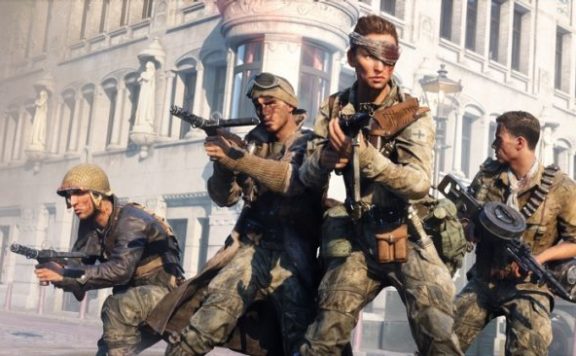Jerusalem, 2005. I was sitting in a tour bus that had just been stopped by an Israeli police blockade. Outside of our climate controlled convoy, we saw police suiting up, ready to take on whatever they would soon find. As they readied themselves, an equestrian unit rode by a lightly armored personnel carrier following. Meanwhile, a mob of young adults rushed toward a place under Palestinian control called al-Haram esh-Sarif. In Arabic, it’s name means “The Noble Sanctuary.” This site in a holy site for Muslims, Christians, and Jewish alike, but on this particular day, it was the site of a small riot. Fourteen years later, it is a moment that I still think about. I will get more into the significance of this story and what it has to do with the title in review later. This is our review of RIOT: Civil Unrest for Nintendo Switch.
RIOT: Civil Unrest is a bit of a thought experiment in the form of a real-time strategy game. You will experience some of the world’s recent moments of upheaval including Egypt’s Arab Spring, Spain’s Indigandos, the Keratea of Greece, and the NoTAV riots of Italy. Each of these experiences is meant to draw you, the player, into the history and allow you to make the judgment of right and wrong.

Over the course of sixteen single player scenarios, you will put yourself into the boots of rioters seeking justice and the police tasked with keeping order. Each scenario can be played from either side and you can customize the tools that you will bring to the table to achieve your goals. At the end of every level, each side is scored for how much damage was done to vehicles and property, if anyone was killed, injured, or captures, and what the political and militaristic gains happened.
So, how will you play it?
As a rioter, you can choose peaceful protest or anarchistic violence. You will also have journalists in your ranks, seeking to uncover the truth or shape public opinion on the events taking place. The choice is yours to incite the crowds and assault the police with rocks and Molotov cocktails or to calm them down, keeping the peace.
As the police, you can choose what approach you use to handle the crowds. Choose tactical squads to hold the front lines with heavy defenses, ballistics squads to provide covering fire, and tactical squads for mobility and defense. Use rubber bullets, tear gas, or call in water tankards to hose down the crowds. If things get too far out of hand, the use of live ammunition is not off the table.

Each level has some type of tangible objective to it, such as defending a gathering or holding a line, but RIOT: Civil Unrest goes beyond the game. The team at IV Productions built RIOT: Civil Unrest from the ground up to be built on the eye witness testimony of people who had both present for these events and involved on either side of them. They are not necessarily sharing a narrative, but laying out a story for you to examine.
Unfortunately, the Switch just is not the right place for this vision to be fully realized. While the controls are fairly simple, RIOT: Civil Unrest falls victim to the dreaded traps that many console-based real-time strategy games have fallen into: to cursor to not to cursor. A decision was made to snap all directional actions to the units selects and to the left thumb stick and to use the right thumb stick to select other groups of units. Any action that requires targeting a specific location will then use the left thumb stick as well. It is extremely sensitive, rendering many action such as throwing rocks or forming barricades clumsy at best.

With many indie titles which had humble beginnings of the PC, I would recommend that as the platform to check it out, because I believe that games like RIOT: Civil Unrest are important. There aren’t important because they make a statement, but because the make us really examine our humanity from multiple vantage points. The gameplay is a vehicle of provocation.
Much like the rioters and the police in Jerusalem on that afternoon in 2005, each side was convinced of the justice of their cause and each carried out actions based on what they believed best within that moment. Who was right? Who was wrong? To this day, I couldn’t tell you. However, I still have the tattered Israeli flag as a reminder of what I learned that day. Riots neither begin nor end in the streets, but are ignited within the human heart. A sobering thought as I consider what riot might be burning within my own.
Note: Our copy was reviewed on Nintendo Switch with a code provided by PR.
PROS:
CONS:







